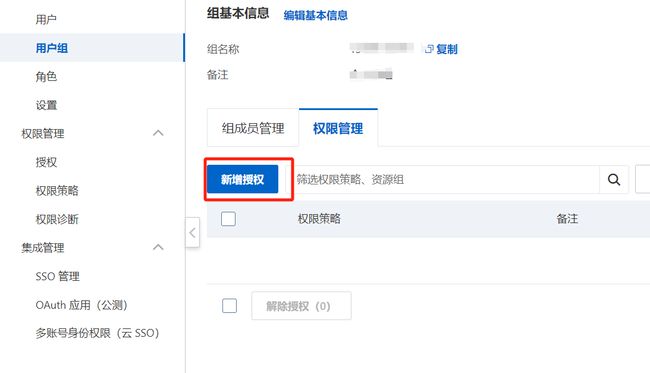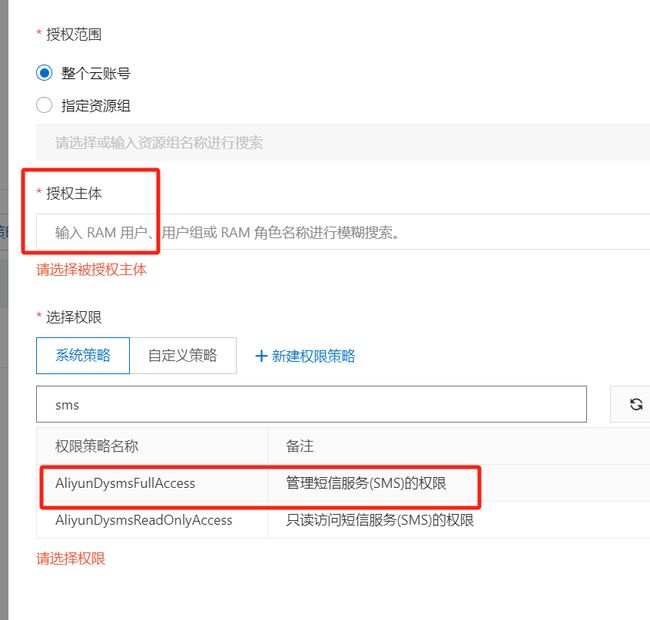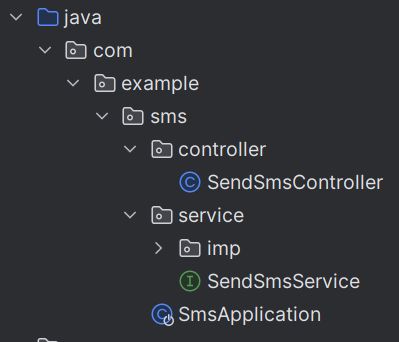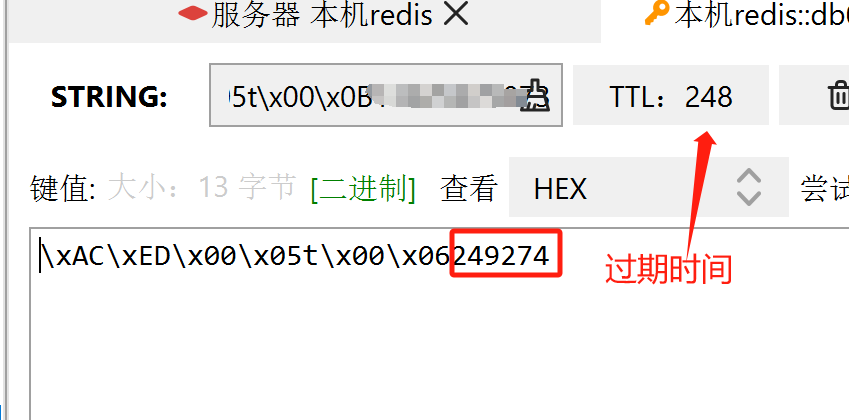springboot+redis+阿里云短信实现手机号登录
Springboot+Redis实现短信验证码发送功能
文章目录
- Springboot+Redis实现短信验证码发送功能
-
- 1.准备工作
-
- 1.1安装Redis
- 1.2 准备一个阿里云账户
- 2.创建工程
- 3.代码实现
-
- 3.1 service层
- 3.2 controller层
- 4. 测试
1.准备工作
1.1安装Redis
如果是开始学习的话建议安装到自己本机环境下,Redis安装
1.2 准备一个阿里云账户
这里以阿里云为例
- 登录到阿里云平台后获取AccessKey
- 创建用户组和用户(记得用户创建完成后保存用户信息后面会用到,切记一定一定一定要保存好用户信息,防止泄露)
2.创建工程
-
创建Springboot项目这里jdk版本为1.8,添加以下依赖即可
-
修改pom文件
<dependency> <groupId>com.aliyungroupId> <artifactId>aliyun-java-sdk-coreartifactId> <version>4.6.3version> dependency> <dependency> <groupId>com.alibabagroupId> <artifactId>fastjsonartifactId> <version>2.0.4version> dependency> -
配置yml文件
server:
port: 8080
spring:
redis:
host: localhost
port: 6379
aliyun:
accessKeyID: 自己的accessKeyID
accessKeySecret: 自己的accessKeySecret
-
测试,可以打开test测试一下是否可以发送成功,直接复制到IDEA中,修改部分参数即可进行测试
import com.alibaba.fastjson.JSON; import com.aliyuncs.CommonRequest; import com.aliyuncs.CommonResponse; import com.aliyuncs.DefaultAcsClient; import com.aliyuncs.IAcsClient; import com.aliyuncs.exceptions.ClientException; import com.aliyuncs.exceptions.ServerException; import com.aliyuncs.http.MethodType; import com.aliyuncs.profile.DefaultProfile; import org.junit.jupiter.api.Test; import org.springframework.boot.test.context.SpringBootTest; import java.util.HashMap; import java.util.Map; @SpringBootTest class SmsApplicationTests { @Test void sendSms() { // 指定地域名称 短信API的就是 cn-hangzhou 不能改变 后边填写您的 accessKey 和 accessKey Secret DefaultProfile profile = DefaultProfile.getProfile("cn-hangzhou", "accessKey", "accessKey Secret"); IAcsClient client = new DefaultAcsClient(profile); // 创建通用的请求对象 CommonRequest request = new CommonRequest(); // 指定请求方式 request.setMethod(MethodType.POST); // 短信api的请求地址 固定 request.setDomain("dysmsapi.aliyuncs.com"); // 签名算法版本 固定 request.setVersion("2017-05-25"); //请求 API 的名称。 request.setAction("SendSms"); // 上边已经指定过了 这里不用再指定地域名称 //request.putQueryParameter("RegionId", "cn-hangzhou"); // 您的申请签名 request.putQueryParameter("SignName", "自己的签名"); // 您申请的模板 code request.putQueryParameter("TemplateCode", "模板号"); // 要给哪个手机号发送短信 指定手机号 request.putQueryParameter("PhoneNumbers", "用于测试的手机号"); // 创建参数集合 Map<String, Object> params = new HashMap<>(); // 生成短信的验证码 String code = String.valueOf(Math.random()).substring(3, 9); // 这里的key就是短信模板中的 ${xxxx} params.put("code", code); // 放入参数 需要把 map转换为json格式 使用fastJson进行转换 request.putQueryParameter("TemplateParam", JSON.toJSONString(params)); try { // 发送请求 获得响应体 CommonResponse response = client.getCommonResponse(request); // 打印响应体数据 System.out.println(response.getData()); // 打印 请求状态 是否成功 System.out.println(response.getHttpResponse().isSuccess()); } catch (ServerException e) { e.printStackTrace(); } catch (ClientException e) { e.printStackTrace(); } } } -
测试通过后就可以进行业务层的实现了
项目结构如下
3.代码实现
3.1 service层
- 创建一个
SendSmsService接口用于对外提供方法
public interface SendSmsService {
/**
* 发送验证码
* @param phoneNum 手机号
* @param code 验证码
* @return
*/
boolean sendSms(String phoneNum,String code);
}
- 实现
SendSmsService接口
import com.alibaba.fastjson.JSON;
import com.aliyuncs.CommonRequest;
import com.aliyuncs.CommonResponse;
import com.aliyuncs.DefaultAcsClient;
import com.aliyuncs.IAcsClient;
import com.aliyuncs.exceptions.ClientException;
import com.aliyuncs.http.MethodType;
import com.aliyuncs.profile.DefaultProfile;
import com.example.sms.service.SendSmsService;
import org.slf4j.Logger;
import org.slf4j.LoggerFactory;
import org.springframework.beans.factory.annotation.Value;
import org.springframework.stereotype.Service;
import java.util.HashMap;
import java.util.Map;
@Service
public class SendSmsServiceImp implements SendSmsService {
private static final Logger LOGGER= LoggerFactory.getLogger(SendSmsServiceImp.class);
//采用注入的方式传递参数
@Value("${aliyun.accessKeyID}")
private String accessKeyID;
@Value("${aliyun.accessKeySecret}")
private String accessKeySecret;
@Override
public boolean sendSms(String phoneNum, String code) {
DefaultProfile profile=DefaultProfile.getProfile("cn-hangzhou", accessKeyID,accessKeySecret);
IAcsClient client=new DefaultAcsClient(profile);
CommonRequest request=new CommonRequest();
request.setMethod(MethodType.POST);
request.setDomain("dysmsapi.aliyuncs.com");
request.setVersion("2017-05-25");
request.setAction("SendSms");
request.putQueryParameter("RegionId", "cn-hangzhou");
request.putQueryParameter("SignName", "自己的签名");
request.putQueryParameter("PhoneNumbers", phoneNum);
request.putQueryParameter("TemplateCode", "模板号");
Map<String,Object> param=new HashMap<>();
param.put("code", code);
request.putQueryParameter("TemplateParam", JSON.toJSONString(param));
try {
CommonResponse response=client.getCommonResponse(request);
//System.out.println(response.getData());//返回的消息
LOGGER.info(JSON.parseObject(response.getData(), Map.class).get("Message").toString());
return response.getHttpResponse().isSuccess();
} catch (ClientException e) {
e.printStackTrace();
}
return false;
}
}
3.2 controller层
import com.aliyuncs.utils.StringUtils;
import com.example.sms.service.SendSmsService;
import org.springframework.data.redis.core.RedisTemplate;
import org.springframework.data.redis.core.ValueOperations;
import org.springframework.web.bind.annotation.*;
import javax.annotation.Resource;
import java.util.concurrent.TimeUnit;
@RestController
@CrossOrigin//跨域支持
public class SendSmsController {
@Resource
private SendSmsService sendSmsService;
@Resource
private RedisTemplate redisTemplate;
@GetMapping("/sendSms")
public String sendSms(@RequestParam("phoneNum")String phoneNum){
//获取到操作String的对象
ValueOperations<String,String> value = redisTemplate.opsForValue();
//根据手机号查询
String phone = value.get(phoneNum);
//如果手机号在redis中不存在的话才进行验证码的发送
if (StringUtils.isEmpty(phone)){
//生成6位随机数
String code = String.valueOf(Math.random()).substring(3, 9);
//调用业务层
boolean sendSmsFlag = sendSmsService.sendSms(phoneNum, code);
if (sendSmsFlag){
// 发送成功之后往redis中存入该手机号以及验证码 并设置超时时间 5 分钟
redisTemplate.opsForValue().set(phoneNum,code, 5, TimeUnit.MINUTES);
}
return "发送验证码到:" + phoneNum + "成功! " + "Message:" + sendSmsFlag;
}else {
return "该手机号:" + phoneNum + " 剩余:" + redisTemplate.getExpire(phoneNum) + "秒后可再次进行发送!";
}
}
@GetMapping("/checkCode/{key}/{code}")
public String checkCode(@PathVariable("key") String number,
@PathVariable("code")String code){
//获取到操作String的对象
ValueOperations<String,String> value = redisTemplate.opsForValue();
//根据key值查询
String redisCode = value.get(number);
if (code.equals(redisCode)){
return "成功";
}
return redisCode==null ? "请先获取验证码在进行校验!" : "错误";
}
}
4. 测试
由于没有前端页面,我们借助postman工具来进行发送验证码功能
此时手机上收到的验证码
redis中的数据
以上便是一个简单的短信验证码的发送实现,注意一定一定一定要保护好自己的AccessKey
以上仅供参考学习,其中还有许多需要改进的功能,看完留下一个三连吧
源码:gitee仓库










